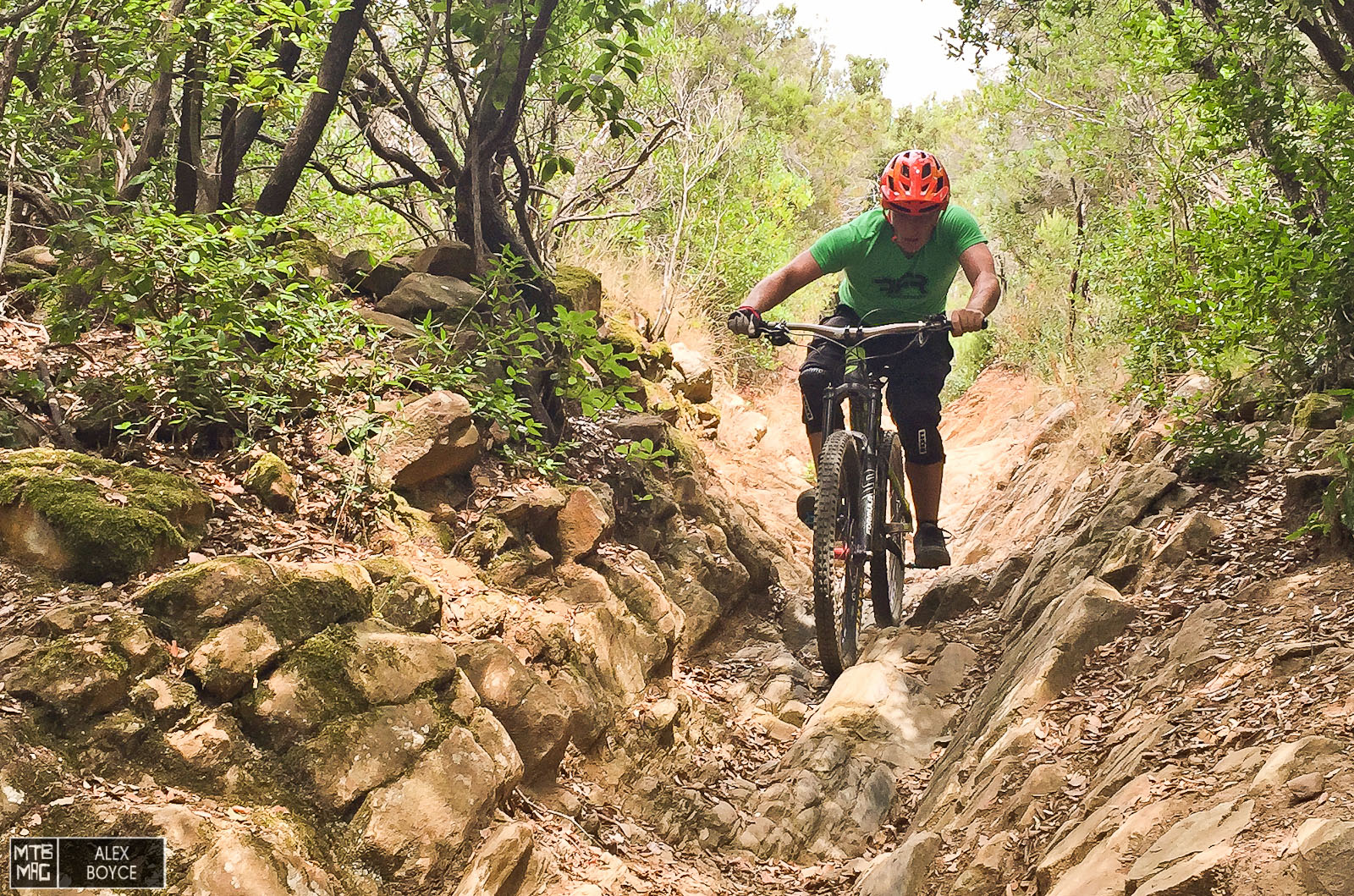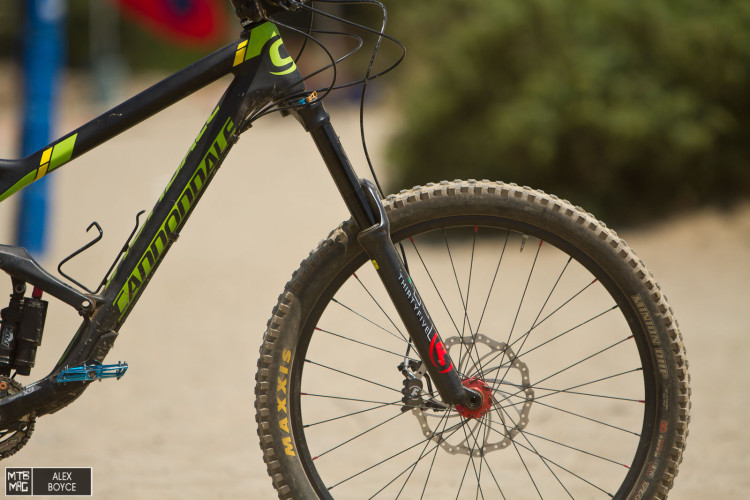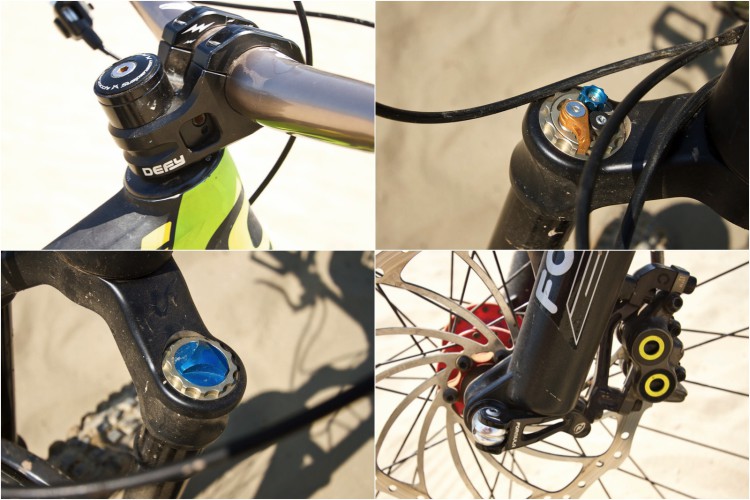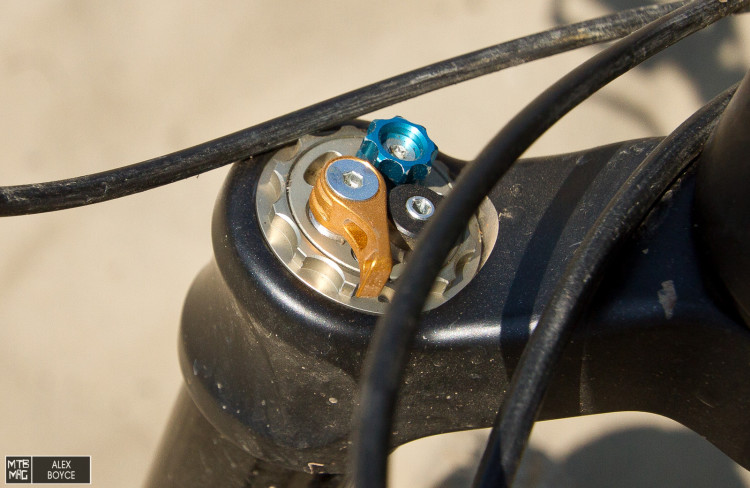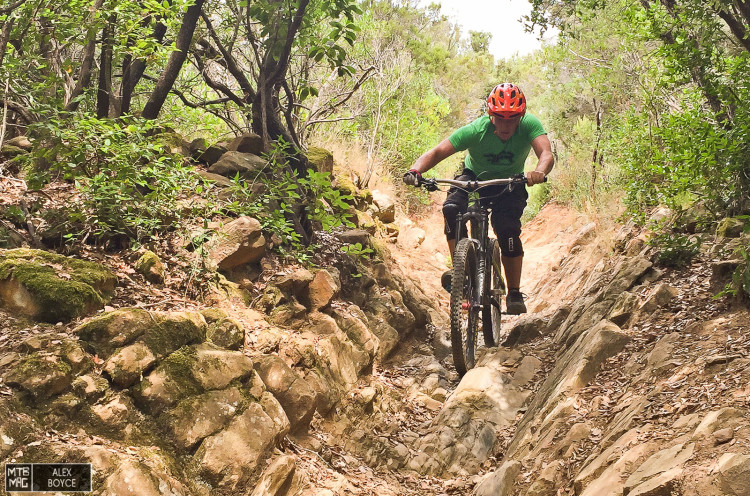[ad3]
Formula have been in the Enduro suspension market for a few years now with their 33 and 35 offerings for 27.5″ and 29″ wheel sizes in a range of travel options. Recently, in late 2014 they introduced their first long travel option for 27.5″ wheels with the 35 EX 180mm. We have had this fork on our Enduro test rig and have been putting it through its paces.
180 mm of travel.
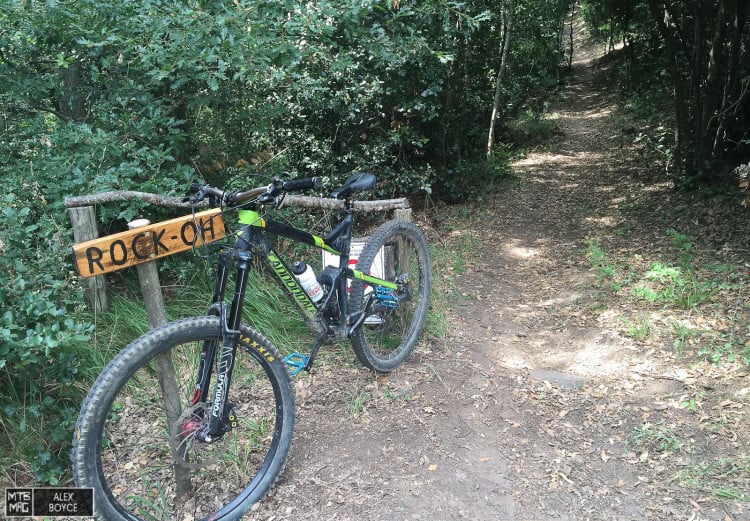
We tested the fork at our test centre in Punta Ala Italy on some of the Enduro World Series trails from 2013.
Specifications
| Internally Adjustable Travel 27.5″ EX | 170-180mm |
| Price | €1.089,00 |
| Weight | 1795g |
| Geometry | |
| Axle to Crown 27.5″ | 486mm +/- 5mm at 100mm of travel |
| Axle to Crown 27.5″ EX | 556mm +/- 5mm at 170mm of travel |
| Fork Offset-Rake | 44mm |
| Max Rotor Size | 203mm |
| Steerer Tube | |
| Size | Tapered 1 1/8″ – 1 1/2″ |
| Color | Black |
| Crown | |
| Color | Matte Black or Glossy White |
| Material | Hollow Forged Aluminum |
| Lowers | |
| Color | Matte Black or Gloss White |
| Dropout | 15QR |
| Axle | Integrated Locking System:15QR Axles |
| Stanchions | |
| Size | 35mm |
| Material | Hard Anodized Black 7075 Aluminum |
| Damping Adjustment | Drop-In Cartridge with Satelite Switch Adjustment |
| Rebound | 21 Click Adjustment |
| Compression | High Speed 24 Click Adjustment |
| Lockout | Crown Mounted standard / Remote optional |
| Remote Cartridge Control | Optional |
| Spring Type | Air Spring (w/5cc Ballistol Oil) |
| Negative Spring | Steel – Dual Coil Technology |
Details of the fork include that we reduced the stack to compensate for increased static bar height, the compression controls, the air inflation point and the quick release and brake bosses.
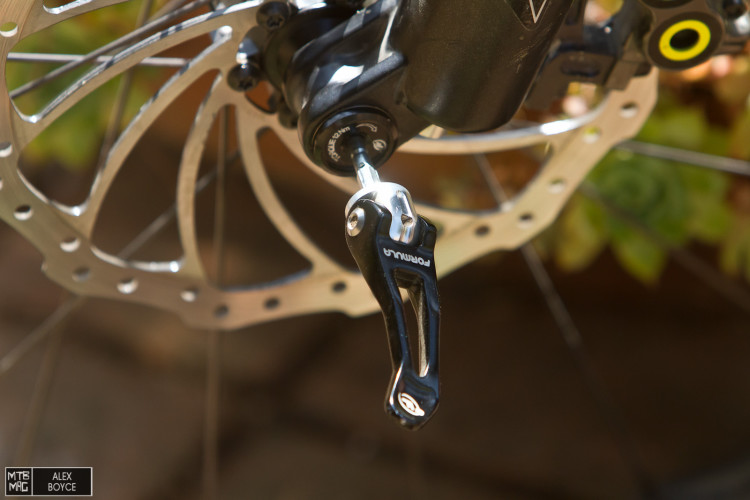
The front quick release can be removed for a clean look or left in place, with our Cannondale test rig it proved useful for use with the rear axle.
Chassis
Formula have been focusing on chassis weight. 35mm stanchions at this length are pretty standard and have proved themselves over the years to be a standard that’s stiff enough and light enough for Enduro usage. We have found the chassis to be plenty sturdy for our riding and the structural finish is of a high quality with nicely machined surfaces. No creaking from the crown and a dependable feel in corners, the lowers move precisely and smoothly.
Our main concern with a fork like this is that with longer travel and a single crown there is more risk of unwanted flex. We have to say in cornering, braking and normal trail use we could not feel any excessive flex compared to other similar shorter travel offerings on the market. Most top end long travel forks across multiple brands nowadays have similar structural limits and the Formula fits within these norms.
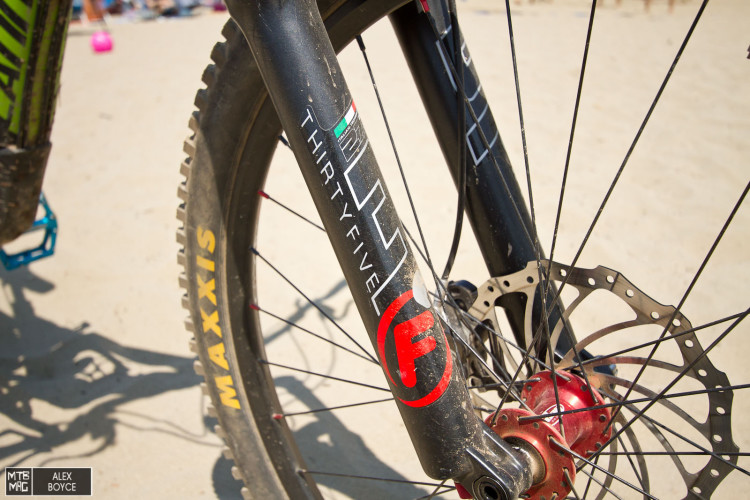
The magnesium lowers are well finished with as much metal added as is needed for the axle attachments and requisite stiffness for the type of riding that this fork is to be used for.
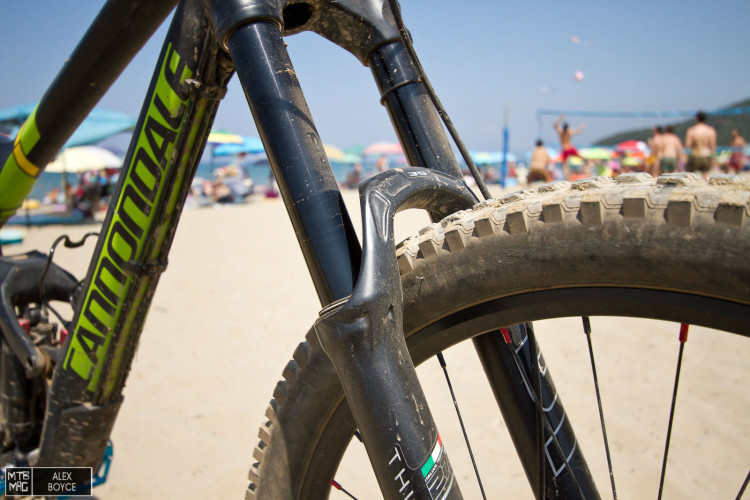
The crown is low profile and the forging at the brace sees lots of relief, there is plenty of mud clearance for large tyres.
Spring
Formula use a spring system that is tunable by adding air and changing the oil level. For a linear feel 5cc of oil is used. For a medium progression 15 cc of oil is used, and a reduction of 15 percent in the amount of air added for your selected sag. For a very progressive spring, 25cc of oil is added and 30 percent of the air used by the rider is removed. Formula consider this type of adjustment for experts, in practice it is pretty easy to do with a syringe and a valve tool.
We had our fork set up with the medium setting. Formula also offers after market kits to make the spring curve rate even more linear. Formula calls this the, “Low progression air spring”. We did not try that modification. Instead, we focused on our out-of-the-box set-up.
Damping
Formula takes a similar view with damping control offering the user a very adjustable system. First, compression is adjustable on the right side of the fork with the compression adjust knob and the lock out lever.
The blue compression adjuster is easy to access and each click opens or closes the compression, we ran the fork most of the time with 4 clicks closed. The clicks are not that perceptible when adjusting the dial but we counted around 18 positions. Formula also sells three kits for varying the compression. The fork comes fitted with a medium adjustment but a soft version and hard version are also available.
The lockout lever is either closed or open, and has a threshold blow off valve which is adjustable with a 3mm hex key from 20kilos of force up to 100 kilos, which means every rider can set their preferred lockout limits, an interesting feature that we liked and meant we could tune precisely for our style of pedalling.
One cool feature we liked is that by loosening a screw under the lever and rotating the top cap, it is possible to adjust the lock out lever position so it is ideally suited according to rider preference.
The rebound damping is controlled underneath the fork leg and has 18 positions. we mostly ran with around 7 clicks of rebound control, which we found optimal for our riding style.
On The Trail
The 35 EX is very adjustable, this helps the rider find a comfortable setting almost straight out of the box. The performance of the 35 EX on the first corner was noticeably smooth. This suppleness was very noticeable over rough stutter segments. Each time it encountered a bump, the compliance was beyond what we have found out of the box before. The Formula 35 EX comes set-up ready to be used aggressively. The reward is that by the time you get to the bottom of the trail, your arms and hands hurt less, and wheel to ground contact feels smoother. Some of this is partially due to the added travel over a 160mm fork.
We spoke to one of the fork’s designers at Formula Luca Rossi, who explained how the internals and their micro movements were just as important as the chassis alignment and precision externally, the two work together to keep the fork moving with minimal stiction.
With our spring set-up we noticed that the fork was very progressive in the medium setting. Our testers preference arrived at around 28 percent sag based on set up recommendations from Formula. For our riding style with this sag we did not bottom the fork out. On the trail, the extra travel meant that our geometry felt better in certain steeper or technical situations, the bike, had less of a “front end down” feeling.
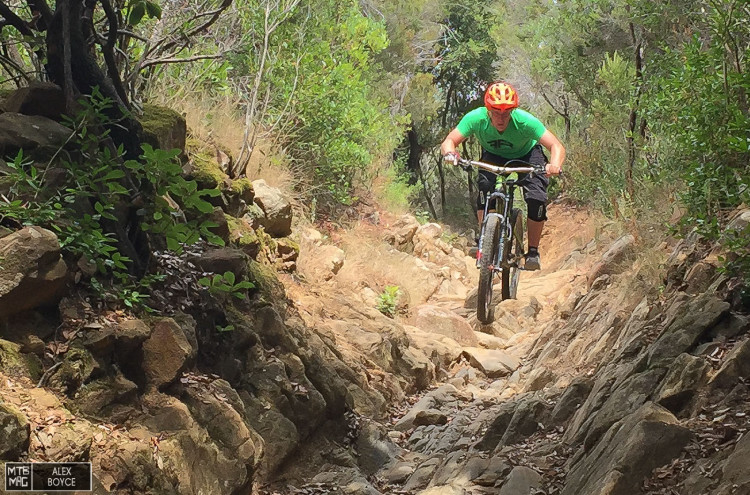
We found the Formula to do a great job of standing up in the travel under heavy braking. Bumps, plus braking can lead to some forks packing down, The 35 EX recovered from hits well with a bit of noticeable sound from the damper (some people may not like this, we did).
Cornering, changes in direction and vibrations were dealt with well by the chassis, often forks of this travel length are beefier and more rigid but much heavier as their destination is normally free-riding. The 35 EX is not a freeride fork, it is more flexible than a Totem or something from the likes of Marzocchi with their old 66. But those forks were not designed to be pedalled nimbly uphill like the 35 EX.
Technical climbing trails with sharp corners did require a little bit of body position re-adjustment on the bike as it’s geometry was more open with the extra travel.
Maintenance over the test period was minimal, just a quick wipe of the legs and the odd smudge of lubricant to keep things tuned. The fork’s performance did not degrade quickly and need a tune up in the 4 months we have had on it, we would definitely need more time on it approaching 6 months to see how it holds up over the long term.
Overall
Formula are aiming at specific types of riders with this fork. Firstly those who ride long technical trails fast. Secondly those riders who want a light weight long travel fork that is very adjustable. Not all riders are the same and being sensitive to small fork adjustments is a skill that not everyone needs or has. The 35 EX has those riders who are sensitive covered. As we progressed with our time riding this fork we found that we could tune the fork for any type of riding style we preferred once we had established a baseline, and really dig in deep with settings.
Which brings us to our conclusion. The type of riding that this fork seems to excel at is Enduro racing. Do we think that 180mm of travel is necessary for all riders? No probably not, yes the bike felt better downhill, but it was slightly less comfortable in corners uphill. The stand out feature of the 35 EX was how much less fatiguing it was to ride with. We could hammer down long, tiring, rough trails and we felt fresher at the bottom and less jarred. Trails felt like they flowed really well.
Remember the 35EX is an after market fork. In that sector riders are looking to get better performance from their forks. Yes it is possible to improve and tune less adjustable/lower end forks with after market upgrade kits. Formula though offer an off the shelf high performance fork that can be set-up to the likes of any rider with no after market modifications necessary.
[ad45]

